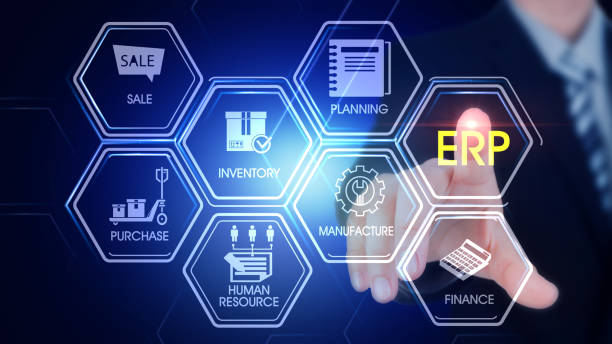
- June 9 2025
- SFI Solution Team
Normalizing Financial Data Across Multiple ERPs
In the current dynamic business landscape, numerous organizations function across various regions, business units, or acquired entities—frequently leading to the implementation of multiple ERP (Enterprise Resource Planning) systems. Although each ERP may fulfill its role locally, this variety presents a considerable challenge: how to standardize financial data for comprehensive enterprise visibility, compliance, and informed decision-making.
In this blog, we will examine the significance of standardizing financial data across multiple ERPs, the common challenges faced, and the best practices to establish a cohesive, precise financial ecosystem that equips your business with enhanced control and insights.
Why Normalization of Financial Data Matters
1. Improved Financial Reporting
Without data normalization, financial reporting becomes inconsistent and error-prone. Different ERPs may define chart of accounts, currencies, taxonomies, and time periods differently, leading to inaccurate consolidations. Normalization ensures apples-to-apples comparisons, enabling trusted, real-time financial reporting.
2. Regulatory Compliance
Meeting compliance standards like SOX, GAAP, or IFRS becomes significantly more complex when data structures vary across systems. Standardizing data across ERPs simplifies audit trails, documentation, and regulatory submissions.
3. Enhanced Strategic Decision-Making
With normalized data, CFOs and financial leaders can generate 360-degree views of performance, identify trends, allocate resources efficiently, and forecast more accurately.
Common Challenges in Financial Data Normalization
1. Diverse Chart of Accounts
Each ERP instance may have a unique chart of accounts. For example, one system may log marketing expenses under “Sales & Promotion,” while another logs the same as “Customer Acquisition.” These discrepancies need harmonization for accurate consolidation.
2. Disparate Data Structures
From naming conventions to currency formats, differences in how data is entered and stored in each system can create barriers to integration.
3. Lack of Central Governance
Without central governance, departments or regions may make independent modifications to their ERPs, leading to fragmented datasets and duplications.
4. Manual Processes and Errors
Manual consolidation using spreadsheets or custom scripts is not only inefficient but prone to human error, creating risk in financial accuracy and timeliness.
Best Practices for Normalizing Financial Data Across ERPs
1. Implement a Financial Data Hub
A centralized data hub or middleware acts as an intermediary between disparate ERPs, collecting and transforming data into a standardized format. This can be done through ETL (Extract, Transform, Load) processes or real-time APIs.
2. Standardize Your Chart of Accounts
Develop a global chart of accounts (GCoA) that all ERP systems map to. This requires cross-functional collaboration to ensure alignment with organizational goals and regulatory needs.
3. Use a Data Normalization Engine or Tool
There are specialized tools that can automate data extraction, normalization, and reconciliation across systems. Consider platforms that support :
-
Multilingual data
-
Multi-currency conversion
-
Audit trail tracking
-
Real-time synchronization
4. Master Data Management (MDM)
Invest in Master Data Management to maintain consistency of key financial entities such as customer IDs, vendor numbers, cost centers, and product SKUs across ERPs.
5. Regular Reconciliation and Auditing
Create a regular cadence for reviewing and reconciling normalized data to ensure ongoing accuracy and integrity.
Technologies That Help in Data Normalization
Several technologies and platforms make the process of normalizing financial data across ERPs more seamless :
-
iPaaS (Integration Platform as a Service) : Tools like MuleSoft, Boomi, or Workato can integrate multiple ERPs and automate transformations.
-
Data Lakes and Warehouses : Platforms such as Snowflake, Google BigQuery, or Azure Synapse can store and analyze normalized data at scale.
-
AI and Machine Learning : These technologies can help automate mapping of data fields, detect anomalies, and suggest corrections based on historical patterns.
The Strategic Benefits of Normalized Financial Data
-
Real-Time Financial Insights : Unified data allows for up-to-the-minute dashboards and KPIs across the organization.
-
Faster Close Cycles : Automated data harmonization accelerates month-end and year-end closing.
-
Scalability : As your organization grows, new ERPs or acquisitions can be integrated faster with a standardized data approach.
-
Informed Decision-Making : Executives gain clearer visibility into profitability, cost structures, and operational efficiencies.
Conclusion
In a world where financial agility can determine competitive edge, normalizing financial data across multiple ERPs is no longer optional—it’s a strategic imperative. Businesses must embrace robust integration frameworks, governance models, and modern tools to harmonize their financial landscape.
Whether you’re navigating an M&A integration, expanding into global markets, or simply aligning legacy systems, the path to financial clarity begins with standardization.
Start your journey today – streamline your financial operations and gain enterprise-wide insights that drive smarter decisions.
If you’re looking to simplify multi-ERP financial integration for your organization, contact us at +1 (917) 900-1461 or +44 (330) 043-1353 to discover tailored solutions that fit your business needs.
Previous Post